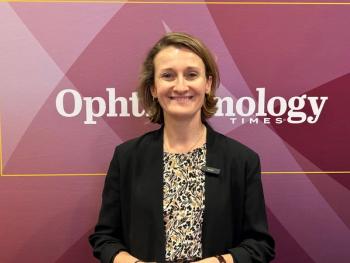
Lens exhibits good long-term profile
Analyses of data collected during 4 years of follow-up in a prospective, multicenter European study demonstrate a favorable safety profile for the foldable, acrylic, angle-supported phakic IOL, including maintenance of corneal endothelial health.
Frankfurt, Germany-Analyses of data collected during 4 years of follow-up in a prospective, multicenter European study demonstrate a favorable safety profile for the foldable acrylic, angle-supported phakic IOL (AcrySof Cachet, Alcon Laboratories), including maintenance of corneal endothelial health, said Thomas Kohnen, MD, PhD.
"Evaluation of long-term safety of phakic IOLs is critical because of the potential duration of the implant over the patient's lifetime, and maintaining the corneal endothelium is important because of its limited regenerative capacity and vulnerability to cell loss with increasing age, trauma, disease, and corneal surgery," he said. "The safety results in patients with the angle-supported phakic IOL implanted are promising so far, but we are continuing to monitor for long-term side effects and will report updates in the future."
The European study enrolled patients ages 18 to 49 years who had no history of corneal or other ocular surgery, had an anterior chamber depth of at least 3.2 mm (including the cornea), and met age-stratified criteria for endothelial cell density (ECD).
Preop, postop evaluation
"Careful patient selection and follow-up are important factors in optimizing safety of anterior chamber phakic IOL implantation," Dr. Kohnen said. "Preoperative evaluation must consider anterior chamber depth and ECD, and patients should also be assessed for conditions that can lead to eye rubbing. Postoperatively, counseling should reinforce the importance of refraining from eye rubbing and should include annual evaluation of corneal health."
Patients in the study receive unilateral implantation of the phakic IOL, and planned follow-up duration is 5 years. Endothelial health is being evaluated using specular microscopy (Noncon Robo, Konan). At baseline and each follow-up interval, three images each were obtained of both the central and peripheral cornea, and they were analyzed for ECD, percent hexagonality, and coefficient of variation at a central reading center.
Newsletter
Don’t miss out—get Ophthalmology Times updates on the latest clinical advancements and expert interviews, straight to your inbox.




















































.png)


